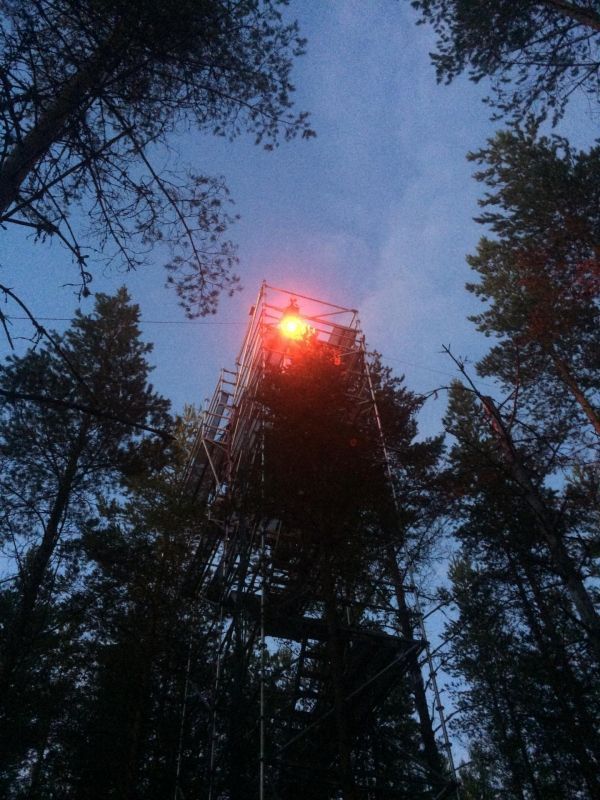In 2017, the group from the Optics of Photosynthesis Lab (OPL) developed a new method to measure a small but important signal produced by all plants, and in this case trees. This signal is a called chlorophyll fluorescence and it is an emission of radiation at the visible and near-infrared wavelengths. Chlorophyll fluorescence relates to photosynthesis and the health status of plants, and it can be measured from a distance, for example from towers, drones, aircraft and satellites. Interpretation of the signal is, however, complicated and so far it has only been possible to measure it within discrete spectral bands from fully-grown trees in the field.
OPL devised a new technique that, for the first time, allowed them to observe from a distance the full spectrum (all colours) of fluorescence of mature trees growing in the forest. Measuring the whole spectrum of emission reveals information on both plant performance (how they photosynthesise) and the structure of the plants themselves.
The issue with conventional remote sensing methods used so far has been that during daytime, most of the fluorescence distribution remains hidden from view, as the signal is so weak compared to sunlight. Therefore measuring fluorescence during daytime, commonly referred to as Solar-Induced Fluorescence (SIF), requires extremely sensitive and specialised instrumentation. The new technique differs from these previous efforts by using commercially available LED technology, which literately lights up the forest at night to reveal the full spectrum of emission of whole trees.
Read more at University of Helsinki
Image: Research structure at Hyytiälä, Finland. (Credit: Jon Atherton)


